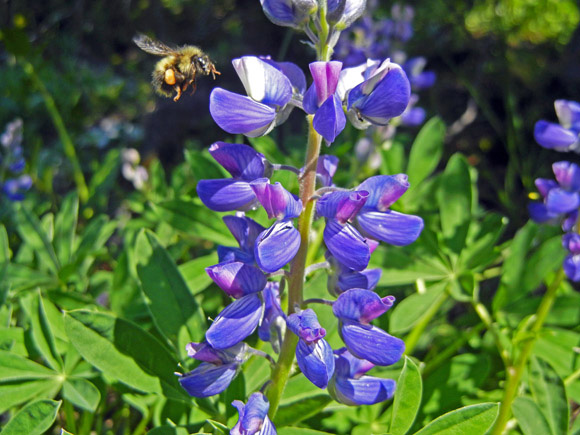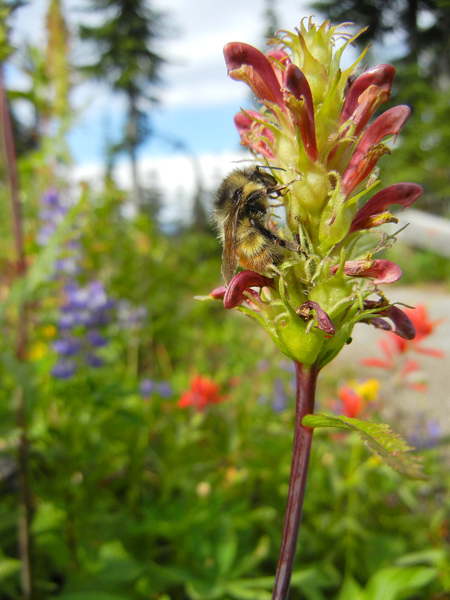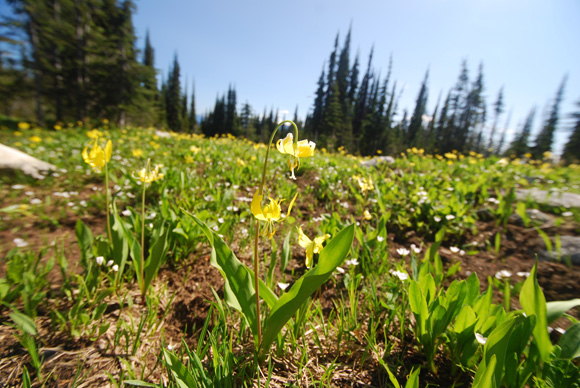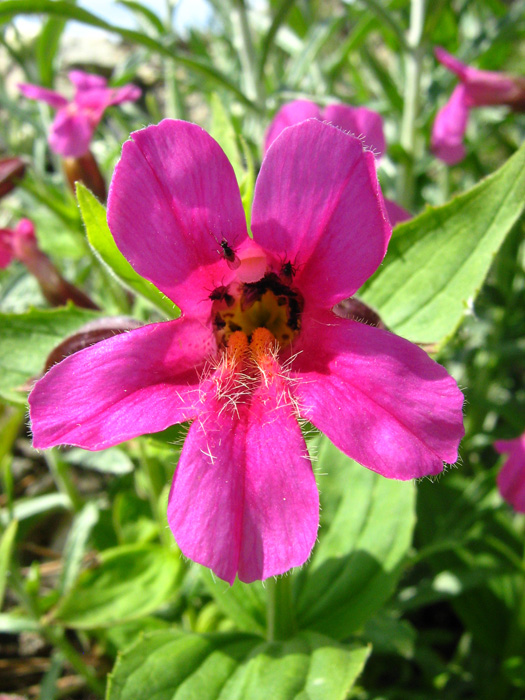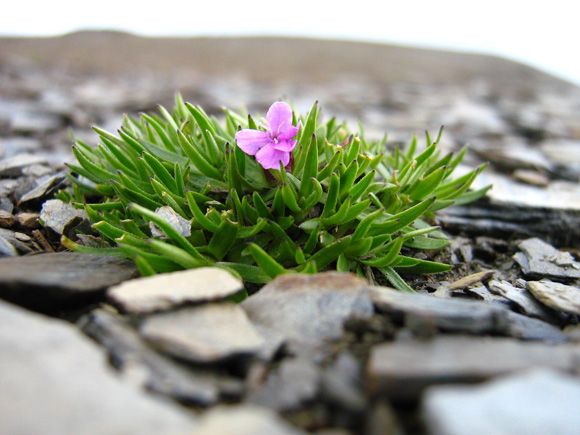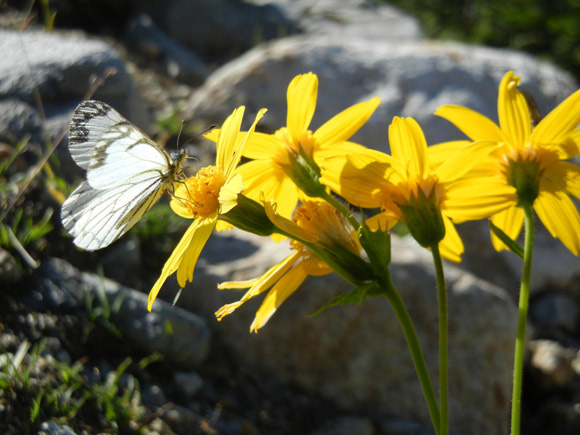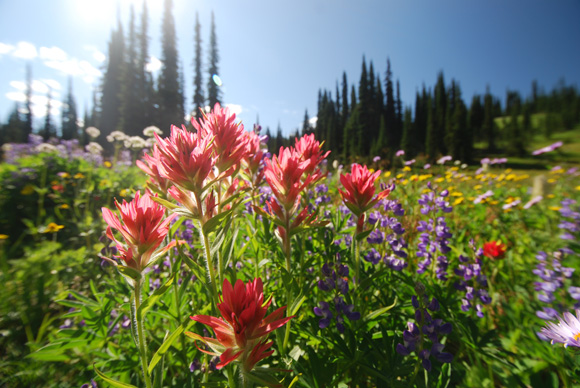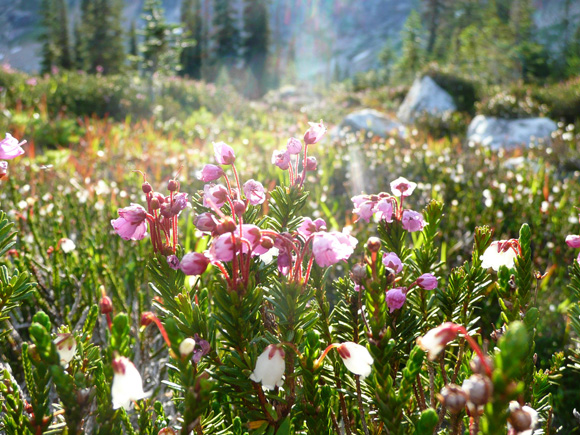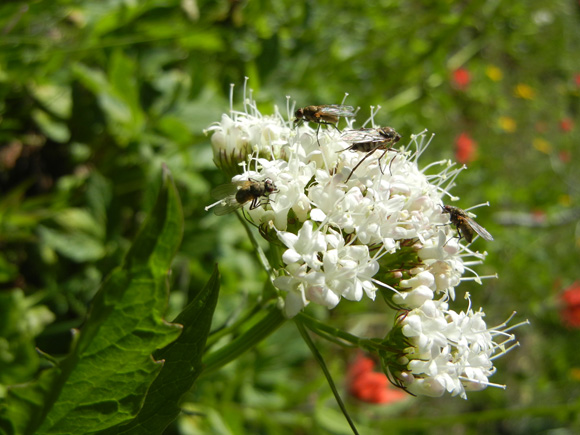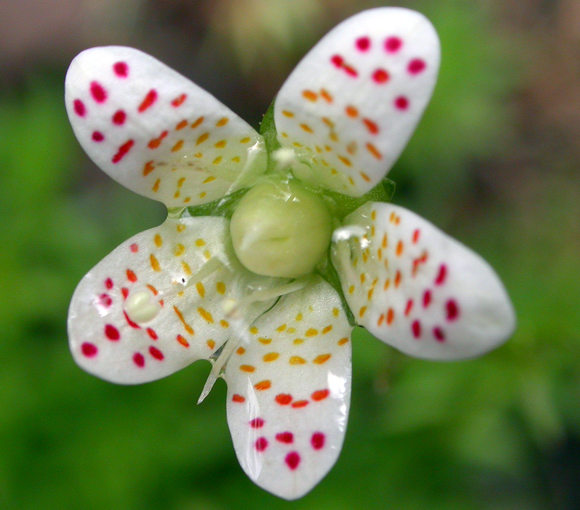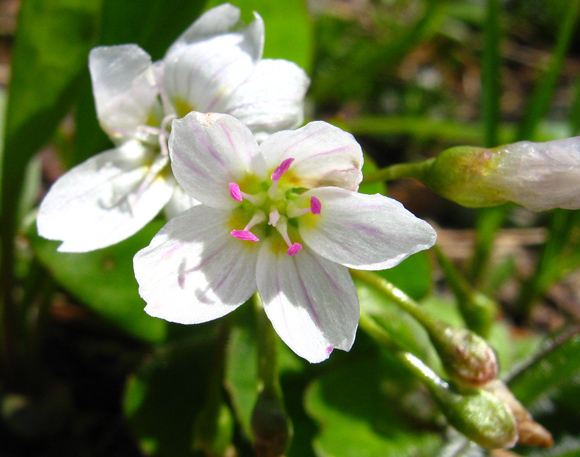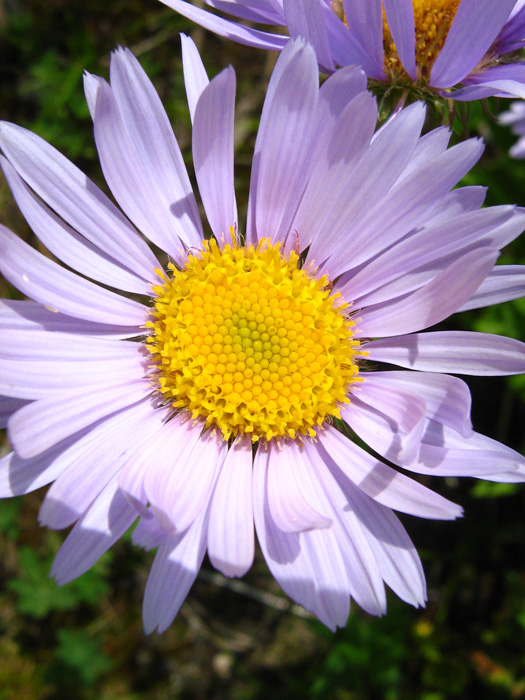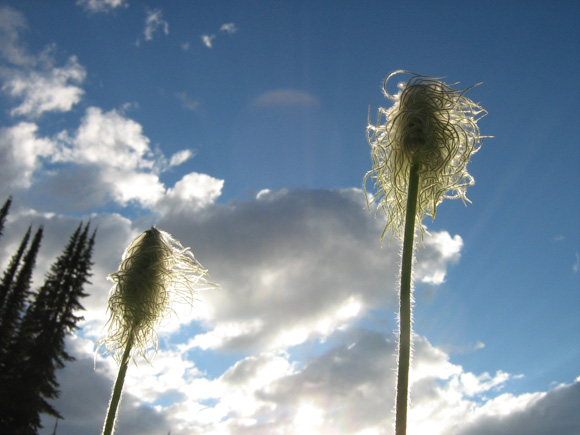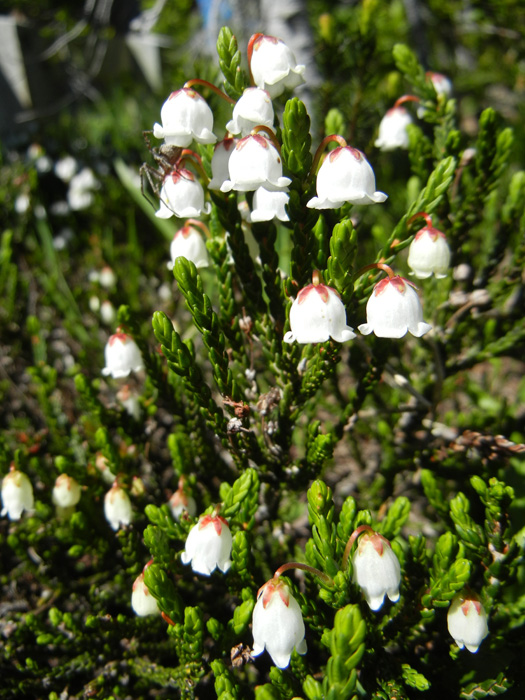
© Ian Houghton / Parks Canada
Common alpine wildflowers
Glacier National Park
Wildflowers add a multitude of colours and scents to the mountain landscape in Mount Revelstoke and Glacier national parks. Certain flowers emerge as the snow retreats, while others appear later in the summer. A few flowers, such as lupin, paintbrush and glacier lilies can be viewed from low to high elevation, while others are only adapted to meadows and crags at high elevations.
Protecting and Enjoying Wildflowers
Although it may be tempting, picking the beautiful wildflowers in national parks is not permitted. Leaving flowers to grow allows the plants and their pollinators to thrive. You can enjoy the brilliant floral displays of Mount Revelstoke and Glacier national parks in their wild setting through photography, identification, or simply appreciation. Leave them intact so that others also have the same picturesque experience.
Arctic lupine (Lupinus arcticus)
Arctic lupine carpets Mount Revelstoke’s alpine meadows with purple. Once the flowers are pollinated the seeds develop into pods. When dry, the pods burst open and spread their seeds outward. No wonder lupines are so bountiful! In 1954, in Yukon, 10,000 year old frozen lupine seeds were discovered and some of them still germinated.
Bracted lousewort (Pedicularis bracteosa)
Louseworts are semi parasitic, meaning they latch on to neighbouring plants and use their energy, rather than producing it themselves through photosynthesis. The name lousewort means ‘lice-plant’ and comes from an old belief that cattle would get lice by browsing on this plant.
Glacier lily (Erythronium grandiflorum)
These are some of the first flowers you will see in the subalpine during snowmelt . They are found scattered throughout subalpine meadows and are a common sight in slide paths. Grizzly bears dig for their hardy bulbous roots soon after emerging from the den. Glacier lily bulbs were also traditionally a very important source of carbohydrates for Interior Salish peoples. The bulbs are not edible raw, but upon cooking them their indigestible carbohydrate converts into a sweet fructose.
Monkey flower (Mimulus lewisii)
Monkey flowers are typically found next to cold mountain streams in sunny areas and are easy to spot with their bright, showy pink petals and five petal structure. Interestingly, the monkey flower will close up when they are touched by pollinators, a feature that probably helps with pollination.
Moss campion (Silene acaulis)
Moss campion is found in rocky alpine habitats where trees cannot grow. It is a classic ‘cushion plant’. Cushion plants grow low to the ground and no living part of the plant projects above the cushion surface. This growth form is common in arctic and alpine environments because the cushion absorbs the sun’s warmth and traps still, warm air. A difference of over 15ºC between air temperature and the temperature in a cushion plant is possible. The cushion also traps wind-blown particles that nourish the plant.
Mountain arnica (Arnica latifolia)
Mountain arnica grows up to 60 centimetres in height and is very common in meadows at treeline elevation. This plant was used for bruises and cuts by the Nlaka’pmx people. Arnica is commonly used in Europe and North America in herbal remedies for sprains and bruises.
Paintbrush (Castilleja miniata)
Paintbrushes are an iconic flower of the subalpine meadows. They are well named as they look like brushes dipped in paint. Interestingly, the coloured “petals” you see are actually showy bracts (a specialized leaf), while the flowers are tiny, tubular, green shoots that stick out of them! Quite deceiving. This plant is semi parasitic, meaning that, while it gets some of its energy from photosynthesis, like other green leafed plants, it also steals energy from other plants by latching on to their roots. Paintbrushes are an important food for hummingbirds, which are attracted to red and yellow flowers.
Pink mountain heather (Phyllococe empetriformis)
Heathers are dwarf shrubs that grow in a mat-like cover over subalpine meadows. Pink mountain heather strongly resembles the classic heather from Scotland (Calluna vulgaris), however it is a different species altogether. Nevertheless, it evokes the same feelings of atmospheric wild space that define Scotland. Pink mountain heather flowers are sometimes used instead of hops in beer-making, much the same way that the Celts used their own heather flowers.
Sitka valerian (Valeriana sitchensis)
When this plant initially comes up in the spring, its shoots are red and its flowers are tinged pink. Later in the season the plant loses this red pigment, called anthocyanin. The red pigment helps to protect the plant by blocking some UV radiation and it also warms the plant by absorbing more infrared radiation. When the subalpine experiences its first fall frost, valerian gives off a skunk-like, sour odour that is evident when you are walking through the meadows.
Spotted saxifrage (Saxifraga bronchialis)
It is well worth your time to take a closer look at this tiny white flower. Notice how the spots on the petals gradually change from crimson at the tips to yellow at the base. “Saxifrage” means “rock-breaker” and refers to the fact that these plants tend to grow in talus and rock crevices.
Spring beauty (Clatoynia lanceolata)
Spring beauty is a spring ephemeral – it comes up as soon as the snow melts and within 2-4 weeks it blooms, produces seeds and stores enough energy for the following spring. It can even use its energy reserves to produce heat and melt through the last of the snow. This early and quick life-cycle allows it to avoid competing for sunlight with the larger, leafier plants. Spring beauty is an early season food source for grizzly bears, like glacier lilies, the bears use their long claws to dig up the bulbs and eat them.
Subalpine daisy (Erigeron peregrinus)
This showy flower is in the Aster family. Aster is Latin for “star”, which is quite apt when you see the shape of the flower. You can find this plant in subalpine meadows, often mixed with lupines, paintbrushes, and arnica. This plant decreases in size as you get to higher elevations.
Western anemone (Anemone occidentalis)
Western anemone is one of the first to flower in spring. Soon after the snow melts it reveals its whitish yellow flowers, alongside glacier lilies and spring beauties. By the time visitors come to see the wonderful colour displays in the meadows on Mount Revelstoke, these plants are no longer blooming. Instead, their shaggy seed heads stand like, Dr. Seuss’ “Truffula” trees throughout the meadows. Western anemone goes by many common names including: "mop-tops," "toe-headed babies" and "hippy heads". These names describe the seed heads which are better recognized than the flower itself.
White mountain heather (Cassiope mertensiana)
This pretty, low growing wildflower is often found growing in the same habitat as pink mountain heather in subalpine meadows. The white, urn-shaped flowers of this mountain heather act like little greenhouses. They allow light in, trap heat, and offer protection from wind. The air inside the flower warms up and the flower’s ovaries get the extra energy they need to produce fruit.
Willowherb (Chamerion latifolium, previously Epilobium latifolium)
Willowherb is closely related to fireweed and is sometimes called river-beauty, as it can often be found growing in the sand or gravel along rivers. This flower is well adapted to living in cold alpine and arctic environments. A willowherb flower was once observed going from completely frozen to thawed within a few hours with no damage to the flower!
Related links
- Date modified :
